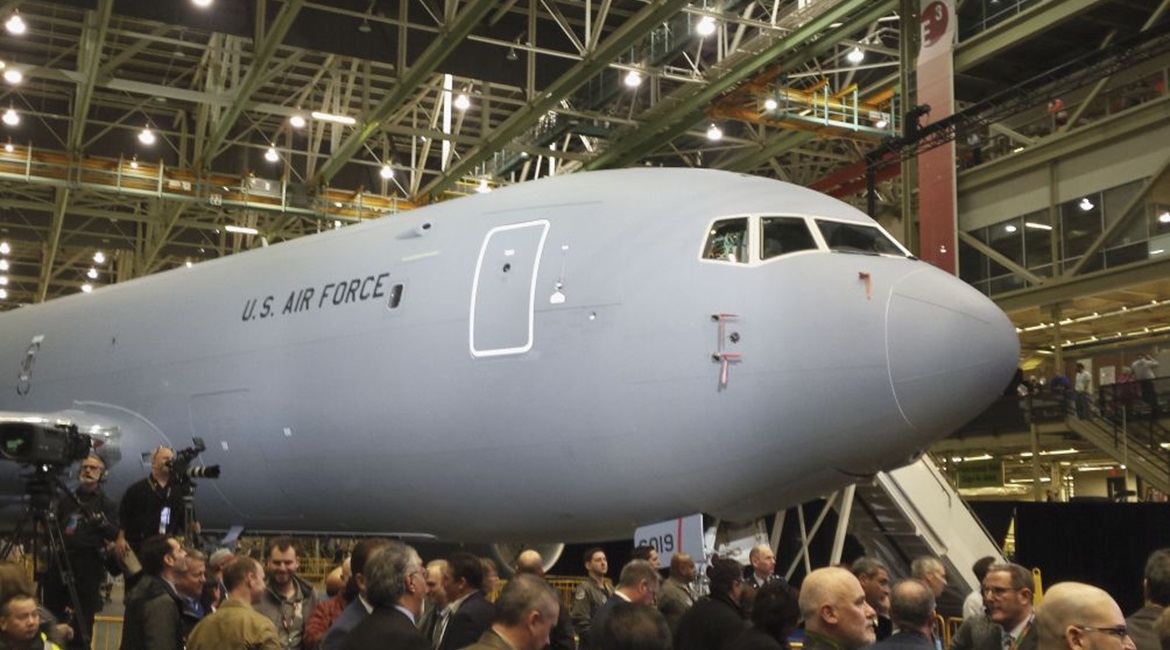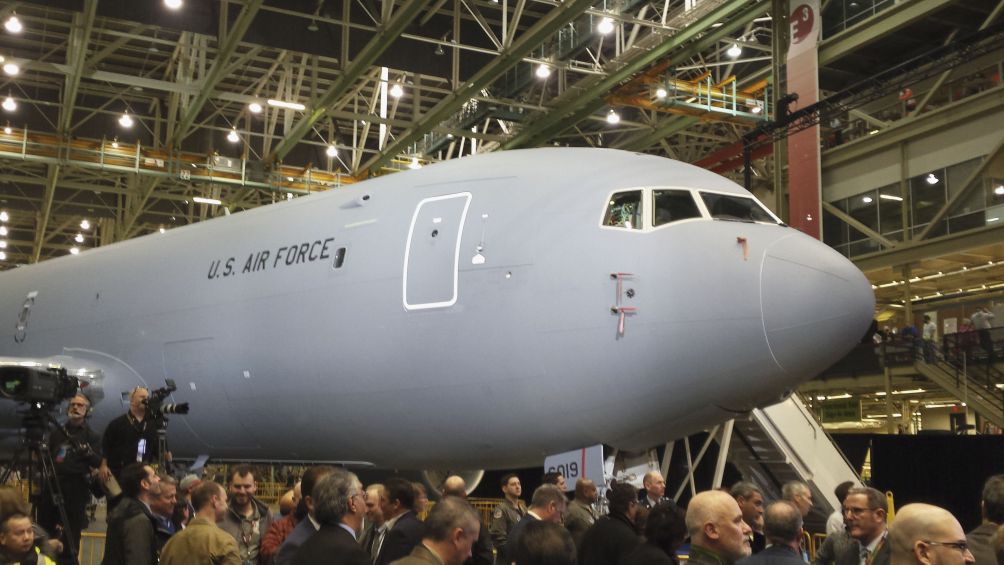
Boeing is planning an upgrade to its KC-46A Pegasus aerial refuelling tanker’s remote vision system (RVS) that will allow it to provide better visibility by automatically adjusting and allowing it to operate effectively in both the sun’s glare and in shadow.
Mike Gibbons, KC-46A vice president, told reporters on 24 January that this enhancement will require both hardware and software upgrades as the company will make lens changes in the camera as well as adaptations to the software and processing functions.
The RVS deficiencies have been one of Boeing’s big hurdles as it moves towards delivering KC-46As. Poor visibility with the RVS was causing unintended boom contacts with receiver aircraft, which can be very problematic when deploying low-observable receiver aircraft such as the Lockheed Martin F-22 Raptor as it can damage radar-absorbing coatings.

Boeing is planning a hardware and software upgrade to its KC-46A remote vision system to allow it to automatically adjust to operate effectively in the sun’s glare and in shadows. (IHS Markit/Pat Host)
Gibbons said at Boeing’s KC-46 delivery ceremony that the company will spend the start of 2019 focusing on the development of this upgrade. He declined to specify delivery dates but said Boeing had a tentative plan and wanted to move aggressively to get this delivered.
Boeing had previously been working on a software fix for this RVS issue that allowed refuelling boom operators to manually toggle contrast between glare and shadows, but that the US Air Force (USAF) customer had asked the company to make this toggle more automatic. Gibbons noted that Boeing is delivering a fully-functioning RVS with its first KC-46A, but that it would work on fixing and improving the system.
Looking to read the full article?
Gain unlimited access to Janes news and more...




